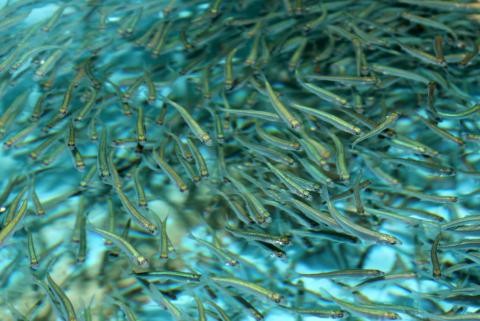Ashlee Melhado (the Zoo’s 2014 Aab Pre-Vet Fellow) joined United States Geological Survey (USGS) biologists at USGS Tunison Aquatic Laboratory in Cortland, NY marking 20,000 lake herring fry (1 to 2 inches long) for future identification and tracking after release this fall.
The lake herring, a once abundant community native fish, had all but disappeared in Lake Ontario due to invasive species such as alewife and rainbow smelt. With invasive fish populations back in check, it’s time to repopulate our waterways with native species.
The marking system involved bathing the fish for four minutes in a harmless bone-binding drug which promotes a glow-in-the-dark appearance to the fish skeleton only when viewed under a special ultraviolet light. The 9,000 lake herring released in Irondequoit Bay in November 2013 will be joined by a similar number of labeled fish to be released this fall. Today’s new marking technology will help us monitor sustainable populations of reintroduced fish for years to come.
Welcome back home – our lake herring native!
– Dr. Jeff Wyatt, Director of Animal Health & Conservation








